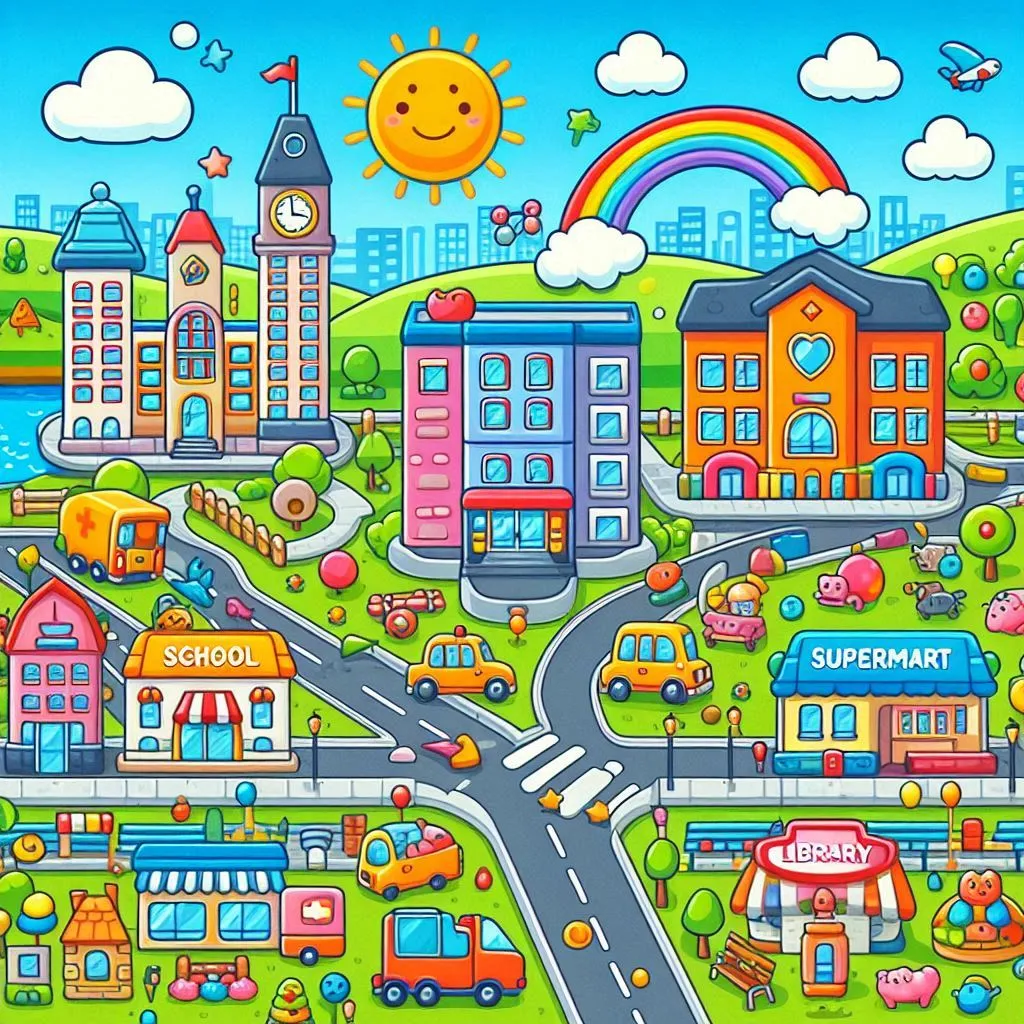Explore the World with Places Flashcards

Places flashcards are a powerful educational tool designed to help learners of all ages discover, recognize, and understand the many locations that make up our world. From bustling cities to quiet villages, from essential community buildings to famous landmarks, these flashcards make learning about places engaging, visual, and memorable. Whether you are a parent, teacher, or student, places flashcards provide a structured way to explore geography, culture, and the importance of different locations in our lives.
Why Learn About Places?
Understanding different places is fundamental to navigating and appreciating the world around us. Places are not just points on a map—they are centers of culture, history, and daily life. Learning about places helps children and adults develop spatial awareness, cultural understanding, and practical life skills. It also enhances vocabulary, improves communication, and builds confidence in exploring new environments. By learning about places, we gain a deeper appreciation for diversity and the interconnectedness of communities worldwide.
What Are Places Flashcards?
Places flashcards are visual learning aids featuring high-quality images and detailed information about various locations. Each card typically includes the place's name, a vivid photo or illustration, and key facts such as its function, significance, and related vocabulary. These cards can be physical (printed) or digital, making them accessible for different learning environments and age groups. They are perfect for classroom activities, homeschooling, travel preparation, or simply satisfying curiosity about the world.
Key Types of Places Featured in Flashcards
- Community Buildings: Schools, hospitals, libraries, post offices, and supermarkets—places that provide essential services and bring people together.
- Public Spaces: Parks, playgrounds, squares, and community centers—areas for recreation, gatherings, and social interaction.
- Landmarks: Famous monuments, bridges, towers, and statues—symbols of history, culture, and achievement.
- Transportation Hubs: Airports, train stations, bus terminals, and ports—gateways that connect people and places.
- Natural Places: Mountains, rivers, forests, beaches, and lakes—wonders of the natural world that inspire exploration and respect for the environment.
- Workplaces: Offices, factories, farms, and construction sites—places where people contribute to the economy and society.
Benefits of Using Places Flashcards
- Visual Learning: Connect place names with images, making it easier to remember and understand their significance.
- Geographical Awareness: Develop a sense of direction, map skills, and understanding of spatial relationships.
- Cultural Appreciation: Learn about the diversity of places, traditions, and lifestyles around the world.
- Vocabulary Expansion: Master words and phrases associated with different locations and their functions.
- Practical Knowledge: Understand how to navigate, use services, and interact in various places.
- Critical Thinking: Compare and contrast places, analyze their roles, and discuss their importance in society.
- Travel Preparation: Prepare for trips by learning about destinations, customs, and essential locations.
How to Use Places Flashcards Effectively
- Place Identification: Practice recognizing places by their appearance, names, and functions.
- Map Activities: Use flashcards alongside maps to locate and connect different places.
- Role-Playing: Act out scenarios that might occur in various places (e.g., shopping at a supermarket, visiting a hospital).
- Storytelling: Create stories or journeys using the places on the cards to boost creativity and understanding.
- Sorting and Grouping: Group places by type, function, or location for critical thinking and organization.
- Field Trips: Visit local places featured on the cards to reinforce learning through real-world experience.
- Language Practice: Use place names and related vocabulary in sentences and conversations.
Fun Facts About Places
- The world's largest library is the Library of Congress in Washington, D.C., with over 170 million items.
- Mount Everest, the highest mountain on Earth, is over 29,000 feet tall.
- The Great Wall of China is more than 13,000 miles long.
- Venice, Italy, is famous for its canals and has over 400 bridges.
- The Amazon Rainforest is home to more than 10% of the world's known species.
- Tokyo, Japan, is the most populous city in the world.
- The Sahara Desert is the largest hot desert on Earth.
- Some post offices in Antarctica operate only during the summer months for researchers and tourists.
Places Flashcards for Different Ages
Places flashcards are suitable for toddlers, preschoolers, elementary students, and even adults learning a new language or preparing for travel. For young children, focus on basic place names and functions. For older learners, explore cultural, historical, and geographical details. Teachers can use them for geography, social studies, and language lessons.
Why Choose Places Flashcards?
Places flashcards are more than just learning tools—they are a gateway to understanding the world, its people, and its wonders. They foster curiosity, global awareness, and practical knowledge, making them an essential resource for families, schools, and anyone interested in exploring the world.
Conclusion
Whether you're a parent, teacher, traveler, or curious learner, Places Flashcards offer an engaging and effective way to discover the world around you. Start your journey today and explore the fascinating places that make up our communities and our planet—one card at a time!